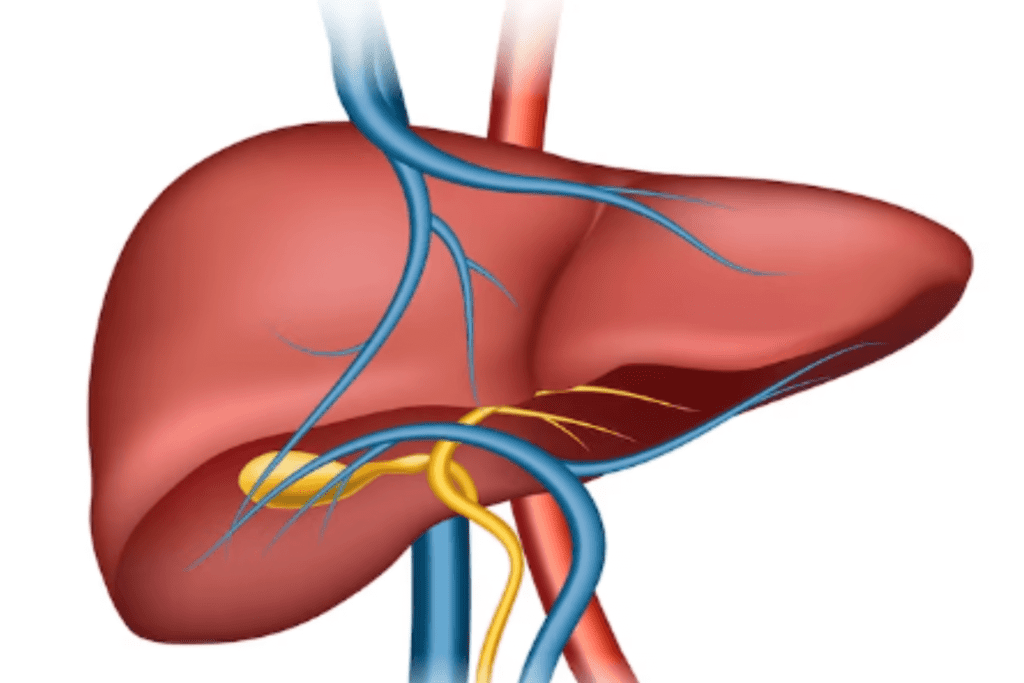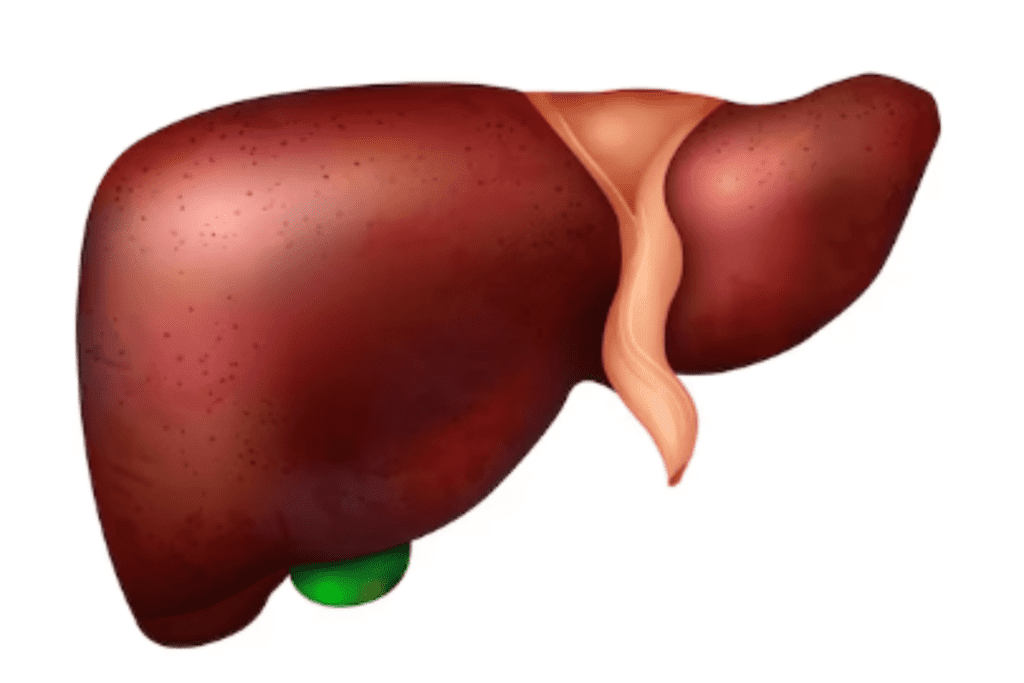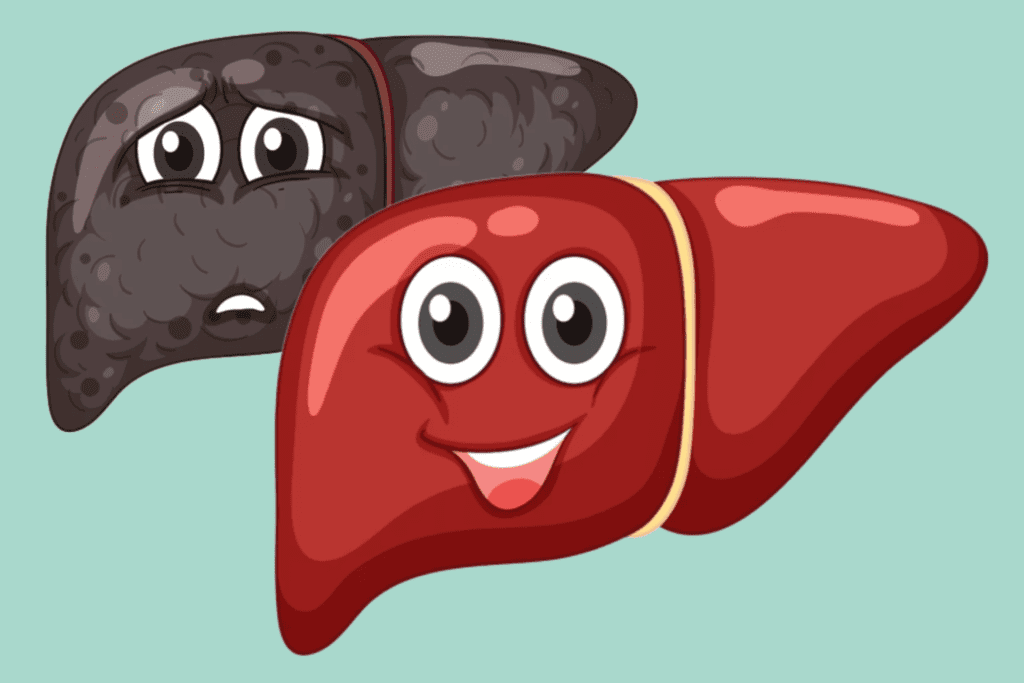We sometimes add products that we believe may be beneficial to our readers. We may receive a small commission if you purchase using the links on this page. Read our affiliate disclaimer
Hepatocytes are specialized liver cells that perform essential functions vital for maintaining health. These cells dominate liver tissue and engage in metabolic tasks like processing carbohydrates, lipids, and proteins. Hepatocytes detoxify harmful substances such as drugs and toxins, synthesize proteins like albumin and clotting factors, and store nutrients including glycogen. They contribute to the immune response and help sustain overall bodily equilibrium. Through their multifaceted roles, hepatocytes play a crucial part in digestion, metabolism, detoxification, and immunity, collectively supporting the body’s well-being.
Table of Contents
Toggle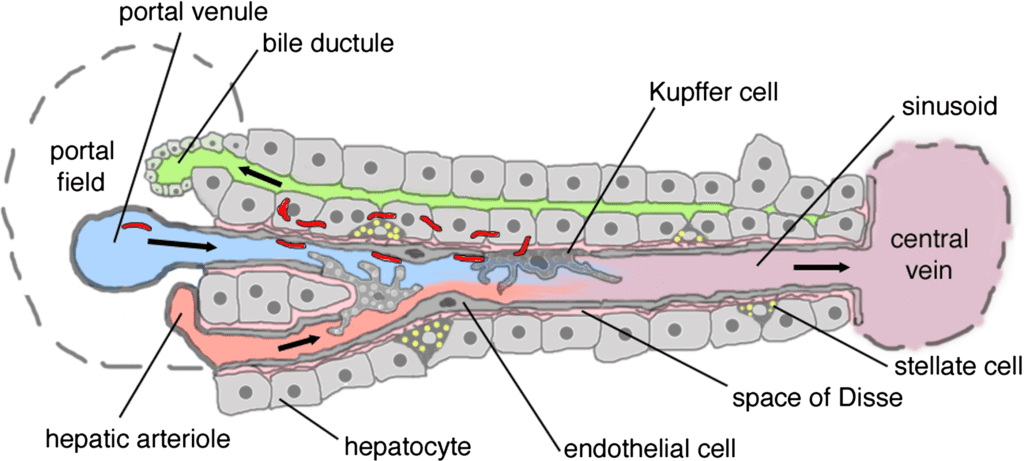
Hepatocytes Structure
Hepatocytes, the main functional cells of the liver, possess a distinctive cellular structure optimized for their diverse roles in metabolism, detoxification, and synthesis.
Their structural features include:
Cell Shape
Hepatocytes typically have a polygonal or cuboidal shape, allowing them to fit closely together in the liver tissue. This arrangement optimizes their functional interactions and supports the efficient exchange of materials.
Cell Membrane
The plasma membrane of hepatocytes contains various transporters and receptors that enable the selective uptake of nutrients like glucose, amino acids, and vitamins, as well as the elimination of waste products and toxins from the cell.
Nucleus
The nucleus of a hepatocyte contains the cell’s genetic information encoded in DNA. This information controls the synthesis of proteins and other molecules required for the cell’s functions and responses to environmental cues.
Cytoplasm
The cytoplasm is the fluid-filled interior of the cell where organelles and various cellular processes occur.
Mitochondria
Hepatocytes have numerous mitochondria, which are responsible for generating energy through oxidative phosphorylation. This is crucial because hepatocytes perform energy-demanding processes like detoxification and synthesis.
Endoplasmic Reticulum (ER)
The ER is a network of membranes involved in protein and lipid metabolism. The smooth ER in hepatocytes is responsible for lipid metabolism and detoxification reactions, while the rough ER is studded with ribosomes and is involved in protein synthesis.
Golgi Apparatus
The Golgi apparatus is responsible for processing, altering, and packaging proteins and lipids that are synthesized within the endoplasmic reticulum (ER). This organelle plays a vital role in effectively organizing and guiding these molecules to their designated locations both within the cell and for transport outside of it.
Peroxisomes
Hepatocytes contain peroxisomes, small organelles that house enzymes responsible for breaking down fatty acids and detoxifying certain harmful substances, particularly hydrogen peroxide.
Microvilli
Some hepatocytes located near blood vessels may possess microvilli, tiny finger-like projections that increase the cell’s surface area. This adaptation enhances nutrient absorption from the blood.
Bile Canaliculi
Adjacent hepatocytes are connected by bile canaliculi, small channels that transport bile produced by hepatocytes. These channels eventually merge into larger bile ducts, which carry bile out of the liver to aid in digestion.
Sinusoids
Sinusoids are specialized blood vessels that run through the liver tissue and come into direct contact with hepatocytes. This proximity facilitates the exchange of nutrients, oxygen, waste products, and hormones between hepatocytes and the bloodstream.
Kupffer Cells
Kupffer cells are specialized immune cells located within liver sinusoids. They help defend against pathogens, remove cellular debris, and play a role in immune responses within the liver.
What are the Functions of the Hepatocytes?
1. Metabolism
Carbohydrate Metabolism:
Hepatocytes help regulate blood sugar levels by storing excess glucose as glycogen and releasing it when needed, such as between meals or during physical activity.
Lipid Metabolism:
Hepatocytes synthesize lipids, including triglycerides and cholesterol. They also contribute to lipid breakdown, ensuring a balance between storage and utilization of energy.
Protein Metabolism:
These cells synthesize and degrade proteins, contributing to the maintenance of amino acid levels in the body. They can also convert amino acids into energy or other compounds.
2. Detoxification and Drug Metabolism
Hepatocytes contain enzymes that process drugs, toxins, and metabolic waste products. These enzymes modify substances to make them less harmful and more water-soluble, facilitating their elimination through urine or bile.
The liver is a primary site for the first-pass metabolism of drugs, affecting their efficacy and potential side effects.
3.Synthesis
Protein Synthesis:
Hepatocytes produce albumin, a protein that maintains blood osmotic pressure and transports various molecules. They also synthesize clotting factors crucial for blood coagulation.
Bile Production:
Bile, synthesized by hepatocytes, aids in the digestion and absorption of fats. Bile is stored in the gallbladder and released into the small intestine after meals.
4. Nutrient Storage and Release
Vitamins and Minerals:
Hepatocytes store fat-soluble vitamins (A, D, E, K) and minerals (e.g., iron) for times when the body’s dietary intake is insufficient.
Glycogen Storage:
Hepatocytes store glycogen, which can be broken down into glucose and released into the bloodstream to maintain steady blood sugar levels.
5. Regulation of Cholesterol and Lipid Levels
Hepatocytes synthesize cholesterol and regulate its levels in the bloodstream. Excess cholesterol can be converted into bile acids and excreted in the bile.
6. Immune Response
Hepatocytes interact with immune cells, such as Kupffer cells in the liver sinusoids, contributing to the body’s immune response against infections and pathogens.
They can produce immune-related molecules that help modulate the immune system’s activity.
7. Detoxification of Ammonia
Hepatocytes detoxify ammonia, a waste product from protein metabolism, by converting it into urea. Urea is then excreted in the urine, preventing the buildup of toxic ammonia in the body.
8. Vitamin Storage and Activation
Hepatocytes store fat-soluble vitamins, releasing them into the bloodstream when needed for various physiological processes. For example, vitamin D is activated by the liver into its active form, which is important for calcium absorption and bone health.
9. Hormone Metabolism
Hepatocytes metabolize hormones, including steroid hormones and thyroid hormones, helping to regulate hormonal balance in the body.
10. Iron Regulation
Hepatocytes store and release iron, which is important for various biological processes including oxygen transport in hemoglobin and enzyme functions.
Hepatocytes’ intricate functions collectively contribute to maintaining metabolic equilibrium, detoxifying the body, aiding digestion, supporting immune responses, and ensuring overall bodily homeostasis.
What Does Hepatocyte Secrete?
Hepatocytes, as the main functional cells of the liver, secrete a variety of important substances that play essential roles in digestion, metabolism, and overall physiological balance.
Some of the key substances secreted by hepatocytes include:
Bile
Hepatocytes synthesize bile, a greenish-yellow fluid that aids in the digestion and absorption of fats in the small intestine. Bile contains bile acids, which emulsify fats and help break them down into smaller droplets, increasing their surface area for enzymatic digestion.
Albumin
Hepatocytes produce albumin, a protein that is a major component of blood plasma. Albumin helps maintain blood osmotic pressure, which is crucial for maintaining the balance of fluids between the bloodstream and surrounding tissues.
Clotting Factors
The liver synthesizes various clotting factors, such as fibrinogen, prothrombin, and factors VII, VIII, IX, and X. These factors are essential for the blood coagulation process, preventing excessive bleeding in response to injuries.
Transport Proteins
Hepatocytes produce various transport proteins that are important for moving substances throughout the body. For example, they produce transferrin, which transports iron, and lipoproteins, which transport lipids like cholesterol and triglycerides.
Acute Phase Proteins
During inflammation or infection, hepatocytes increase the production of acute phase proteins, such as C-reactive protein and haptoglobin. These proteins play a role in the body’s response to injury or infection.
IgA
Hepatocytes secrete IgA, an immunoglobulin that is an important component of the body’s immune defense at mucosal surfaces, including the digestive and respiratory tracts.
Urea
Hepatocytes are involved in the conversion of ammonia, a toxic waste product of protein metabolism, into urea. Subsequently, the kidneys excrete urea through urine.
Fibrinogen
Hepatocytes produce fibrinogen, a protein essential for blood clotting. Fibrinogen is converted to fibrin during the clotting process, forming a meshwork that helps stabilize blood clots.
Other Proteins
Hepatocytes secrete various other proteins involved in immune responses, hormone metabolism, and other physiological processes.
Hepatocytes Histology
Hepatocytes’ histology refers to the microscopic study of their tissue structure. In liver tissue, hepatocytes are arranged in functional units known as hepatic lobules. Here’s an overview of hepatocytes’ histology:
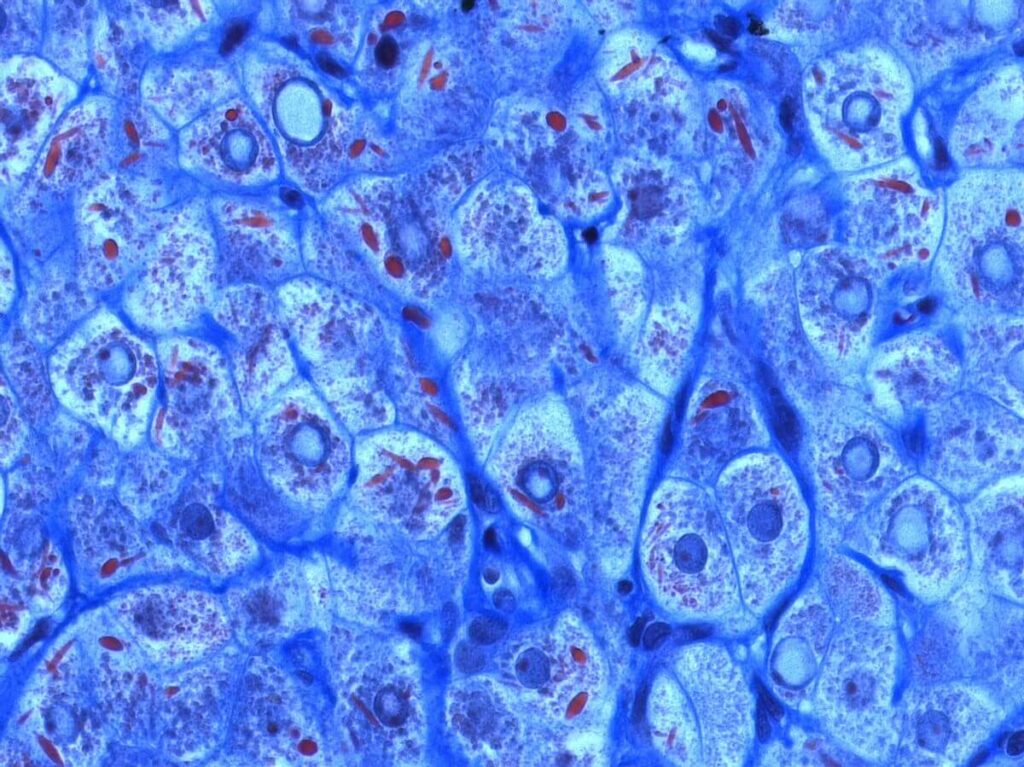
Alexquaas, CC BY-SA 4.0, via Wikimedia Commons
Hepatic Lobules
These are cylindrical structures that form the basic functional units of the liver. Each lobule consists of layers of hepatocytes surrounding a central vein. The lobules are connected by a network of blood vessels, including sinusoids, which are specialized capillaries.
Hepatocyte Arrangement
Hepatocytes are organized into plates or cords that radiate outward from the central vein of each lobule. This arrangement ensures efficient contact with blood flowing through the sinusoids.
Sinusoids
These are specialized capillaries located between the rows of hepatocytes. Sinusoids receive blood from both the portal vein (carrying nutrient-rich blood from the intestines) and the hepatic artery (carrying oxygen-rich blood). Hepatocytes’ proximity to sinusoids facilitates the exchange of nutrients, waste products, and hormones.
Endoplasmic Reticulum (ER)
Hepatocytes have extensive ER, both smooth and rough. Rough ER is studded with ribosomes and is involved in protein synthesis, while smooth ER is responsible for lipid metabolism and detoxification reactions.
Mitochondria
Hepatocytes have numerous mitochondria due to their high energy demand. These organelles generate energy through oxidative phosphorylation, supporting the cell’s metabolic activities.
Bile Canaliculi
Adjacent hepatocytes are connected by small channels called bile canaliculi. These channels allow bile produced by hepatocytes to flow toward larger bile ducts, which eventually carry bile out of the liver for excretion.
Kupffer Cells
These are specific macrophages positioned within the sinusoids. They help remove debris, pathogens, and damaged blood cells from the bloodstream, contributing to the liver’s immune response.
Central Vein
Each hepatic lobule has a central vein located at its core. Blood from the sinusoids flows into these central veins and eventually exits the liver.
Nucleus
Each hepatocyte contains a single nucleus, which houses genetic material (DNA) that controls the cell’s functions.
Storage Granules
Some hepatocytes may contain storage granules, such as glycogen (carbohydrate storage) and lipid droplets (fat storage).
Stellate (Ito) Cells
These cells are located in the space of Disse, which is the space between hepatocytes and sinusoids. Stellate cells are involved in storing vitamin A and may play a role in fibrosis and wound healing.
Conclusion
In summary, hepatocytes are specialized liver cells that play a pivotal role in maintaining numerous physiological functions crucial for overall health. Their intricate structure, arrangement within hepatic lobules, and interactions with various components of the liver tissue highlight their significance in metabolism, detoxification, synthesis, and immune responses. Hepatocytes’ secretion of bile, albumin, clotting factors, and other substances contributes to digestion, nutrient transport, blood clotting, and immune defense. Understanding hepatocyte structure and histology provides insights into their multifaceted functions, emphasizing their essential role in sustaining metabolic balance, protecting against toxins, and ensuring the body’s overall well-being.
Read Next: Liver: Anatomy, Functions, and Location
Resources
https://www.ncbi.nlm.nih.gov/pmc/articles/PMC9890163/
https://www.ncbi.nlm.nih.gov/pmc/articles/PMC4320379/
https://www.ncbi.nlm.nih.gov/pmc/articles/PMC4582071/
https://www.nature.com/articles/cmi201597


